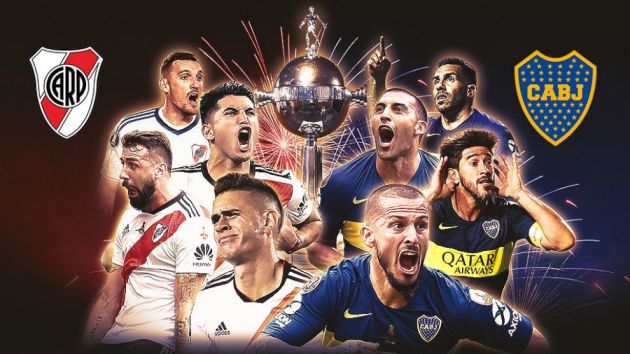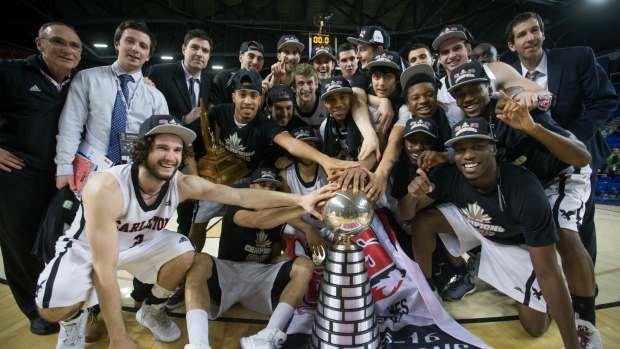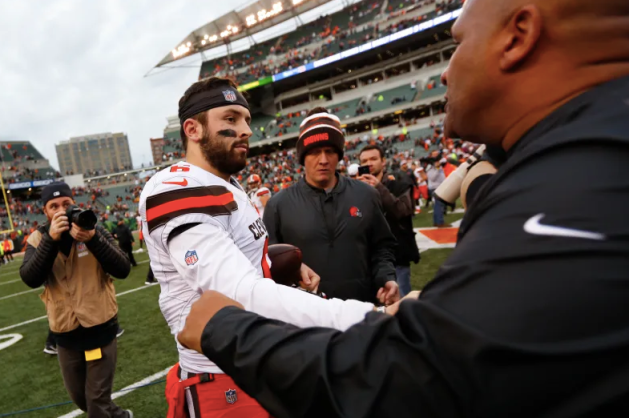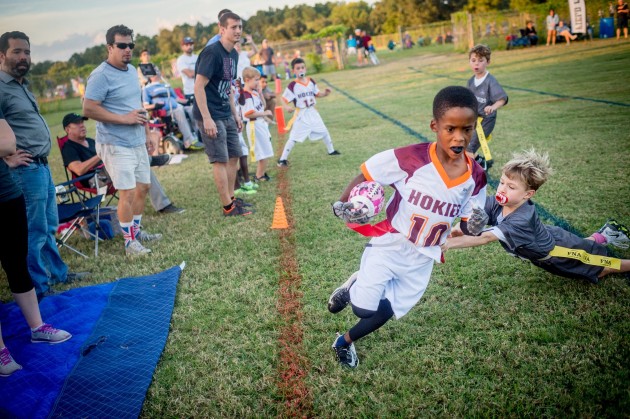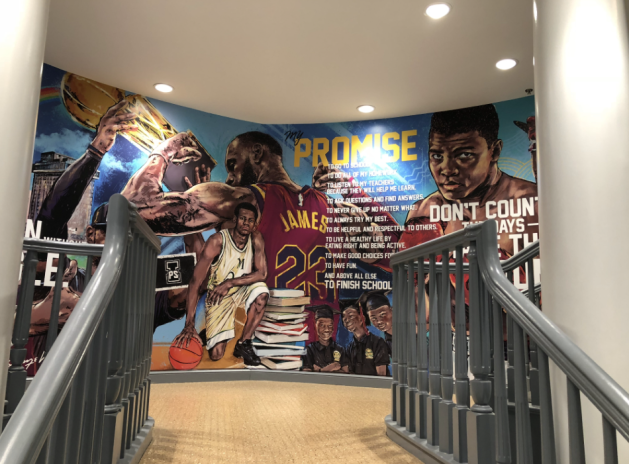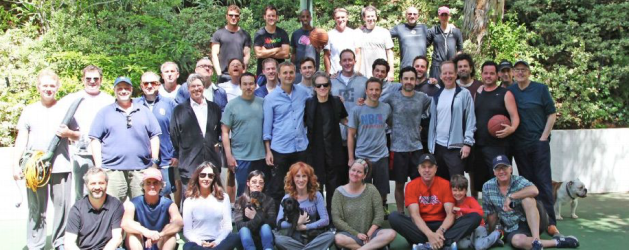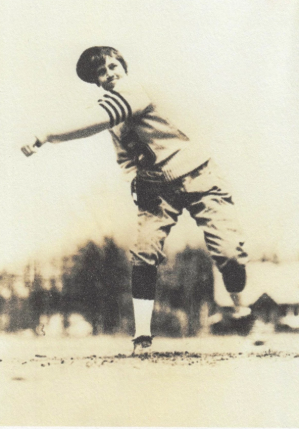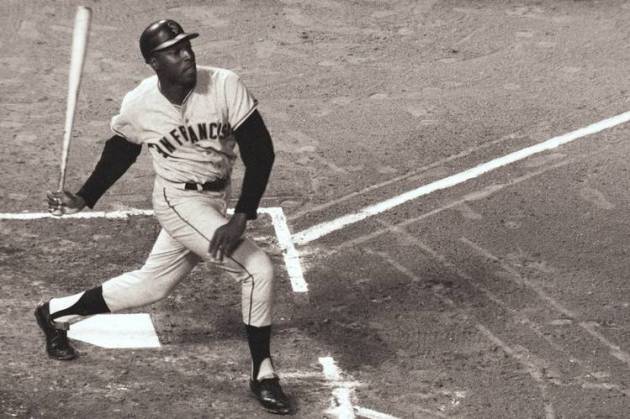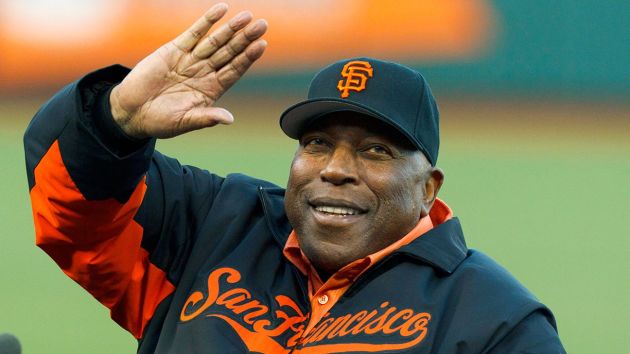Yankees/Red Sox? Michigan/Ohio State? Lakers/Celtics? Amateurs!
If you’re an American sports fan, and you think you have a bitter rival, you are very, very wrong. Hell, if you’re a Real Madrid fan, and you think your rivalry with Barcelona is intense, go kick rocks. You have not seen a bitter rivalry like Boca Juniors and River Plate. And don’t just take my word for it. From wikipedia:
In April 2004, the English newspaper The Observer put the Superclásico at the top of their list of “50 sporting things you must do before you die”, saying that “Derby day in Buenos Aires makes the Old Firm game look like a primary school kick-about”, in 2016 the British football magazine FourFourTwo considered it the “biggest derby in the world”, The Daily Telegraph ranked this match as the “biggest club rivalry in world football” in 2016, and the Daily Mirror placed it number 1 in The top 50 football derbies in the world, above El Clásico between FC Barcelona and Real Madrid C.F., in 2017.
You may be excused for not knowing either team if you do not follow South American soccer. But River/Boca is the most vicious rivalry on the planet, and for my money it’s not close. River and Boca are cross-town rivals, in Buenos Aires, Argentina. It’s a classic rivalry. Boca, traditionally, is the working class club. Their stadium, La Bombonera (such a cool name), is located in the Buenos Aires docklands, known as “La Boca” (the Mouth). River’s El Monumental, is located in the relatively affluent area of Nuñez. The teams have strikingly different colors, blue and yellow for Boca, and black, white, and red for River. The teams have featured some of the greatest Argentinians players ever, including Maradona, Carlos Tevez, and Martin Palermo for Boca, and Javier Mascherarno, Radamel Falcao, and Gonzalo Higuain for River.
Most importantly for any rivalry, the fans absolutely hate each other, and they do not mess around. When the teams play, it’s known as the Superclasico. Usually, there are two per year. But this year, both Boca and River made the Copa Libertadores final. Libertadores is the South American version of the European Champions League. The best clubs from each country play a tournament, and this year it came down to River and Boca. The two teams played to a 2-2 draw at La Bombonera a couple weeks back, and were set to play the finale last Saturday at Monumental. The game never happened.
As the Boca bus made its way toward the stadium, it was attacked by a huge mob of River fans. And if you think I’m exaggerating, watch this:
Yes, they smashed the windows out of the moving bus with rocks. Things got worse, and the police used pepper spray/tear gas in an attempt to disperse the crowd. It didn’t work well, though, because with the smashed out windows, the players also got tear gassed.
When the players finally arrived at the stadium, they were in no shape to play. Many were having difficulty breathing. The Boca captain even had a gash over his eye from the broken glass. But CONMEBOL, the South American soccer federation, insisted the game go on. FIFA’s president was in town for the match. Fox had paid a ton to broadcast the game. The show must go on! CONMEBOL eventually granted Boca a series of one hour delays, before threatening to hold the team out of all competitions for five years if they did not play, which is absolutely insane. Boca called their bluff, and CONMEBOL relented, suspending the game until the next day, and then indefinitely. Presently, the plan is to hold the game outside of Argentina to ensure the players’ safety.
I have a little experience with this. I went to a Boca game at La Bombanera, back in 2009. I was with my brother, Pat, and my buddy, Ryan. We had no idea what we were getting into. We took a cab down to the stadium hoping to scalp some tickets. In hindsight, this was an absolutely insane idea. Luckily, we found no one selling tickets. I don’t think it’s a thing there. But we did find a tour group of Americans being led by a local. It seemed legit, and he said he could get us in, with seats in an enclosed area away from the rest of the fans. We didn’t have enough cash, so he walked us to an ATM at halftime, and I wasn’t feeling nervous until I saw how terrified he was of us all getting mugged as we took out the cash.
The game was fun, and the crowds were nuts. But after the game, we were descending a grand stair case to the exit, and I remarked that it was crazy, but I never felt unsafe. Just as I said it, the crowds in front of us who had already gotten outside began to retreat inside. I looked up and saw police in riot gear, just feet from us, as they retreated from an onslaught of asphalt. Yes, the fans were ripping up the street and throwing it at the cops. We saw cops get hit, blood gushing from their heads. They dropped steel doors while the police outside fought off the crowds. It was legitimately scary. Finally they opened the doors, and our guide had the group sprint across the street to a waiting van. We asked him if rioting was normal. He said yes. We asked if it was a bad riot. He said, nah – it’s a medium riot.
And here’s the kicker: We were not even at El Superclasico! This was not River/Boca. This was Boca against a team called Rosario, from central Argentina. It was a regular-ass game! So, while I don’t recommend you go watch a Superclasico in person, I do suggest you think of it the next time you hear an announcer call Alabama and Auburn “bitter” rivals. -TOB
Source: “Copa Libertadores Final Delayed An Hour After River Plate Fans Attack Boca Juniors Bus”, Gabe Fernandez, Deadspin (11/24/2018)
The Netminder of Martin Acres

Ever read a John Irving novel? Curtis Joseph had a twenty year career as an NHL goalie with three all-star appearances, an olympic gold medal, and he’s married to a former Playboy model, but by far the most remarkable detail about his life is that he grew up in a home for the mentally ill.
In an excerpt from his biography (written with Kirstie McClellan Day), Joseph described the circumstances that led he, his mother, and “my mom’s husband” taking over a home, as well as the patients that are just as much a part of his childhood as family.
There was Wellington the pedofile, Tony with his “13 imperfections”, Little George, and Joseph’s favorite – Big George. There was Little Albert, Big Albert (a former wrestler), the architect who would write measurements on the walls and Dave, the burnt out drummer. Some had lobotomies, others had terrible accidents, and all of them were a part of Joseph’s home life at Martin Acres.
Even the circumstances that led Joseph coming to live at Martin Acres seem like something out of a novel. His mother, a pill popper of sorts, worked at the home handing out the meds to the patience. When the original owners grew too old to run the place, she offered up her husband’s house to the owners in exchange for the business of running the home. Both sides agreed.
I had no idea we were moving. I found out one day after school. There was no conversation about it, just “Get in the station wagon.” We pulled up past a sign that said martin acres and onto the driveway that ran in front of the house. Harold told me to hop out and unload my stuff. That wasn’t hard because I had only a few shirts, a couple of pairs of underwear and three pairs of socks, two sweatshirts, one pair of blue jeans, a pair of cords and my hockey cards. My whole world in one suitcase.
I followed Harold through the front door, then through another door, up the stairs to the right, above the garage. There were four bedrooms up there. He pointed to the first room on the right. “This is yours,” he said. The other doors were all opened a crack and I could feel several pairs of eyes watching.
I found out later that my room was with the men who were on the calm side. The other side was a little more dangerous.
Like I said, Joseph’s upbringing is the stuff of a John Irving novel. – PAL
Source: “NHL Legend Curtis Joseph Grew Up In A Home For The Mentally Ill”, Curtis Joseph, Deadspin (11/27/18)
Sports Can Be an Escape, But Not a Panacea
This is a really good article – short and to a very good point. Ohio State’s head football coach, Urban Meyer, had a “difficult” year in that it was revealed that he had swept years of domestic violence by one of his assistant coaches under the rug, lied when confronted, and then tried to cover it all up once the lies came out. They were “difficulties” almost entirely of his own doing, and which helped reveal to the general public that Urban Meyer is a win-at-all-costs sh-tbag. But, win he does, and so the show has gone on.
That doesn’t mean that his team winning games absolves him of his sins. But, in the waning minutes of Ohio State’s big win over Michigan last weekend, Fox’s Gus Johnson carried the water for Meyer, discussing how Meyer “overcame” a “troubling” season.
That is so tone deaf and misses the point entirely. As Deadspin’s Gabe Fernandez put it:
There’s always an argument to be made that people turn to sports to escape the bleak realities of the world, and just let their mind sit on autopilot, so it’s best to keep these issues out of whatever is happening on the field. Fine, but then media members can’t get swept up in the emotion of what’s happening to the point where such a definitive character flaw can be exorcised just because one team scored more points than the other.
Amen. -TOB
Source: “Gus Johnson Worked Obscenely Hard To Redeem Urban Meyer”, Gabe Fernandez, Deadspin (11/24/2018)
PAL: I don’t have much to add to it, other than to echo how dumb this is and how good of a point Fernandez makes. You can’t have it both ways.
The Best College Hoops Coach Doesn’t Even Coach in the NCAA
If you asked me to name the best college hoops coaches over the last twenty years, I’d consider names like Coach K, Boeheim, Mike Montgomery, Calipari, Bill Self, Roy Williams. Jay Wright. Lots of names to consider! All have had good success.
But if you then told me there was a coach who, over the last two decades, had compiled a winning percentage of .922, and beaten teams like Wisconsin in 2014, Baylor in 2015, Wichita State in 2016, and Cincinnati, and Ole Miss this year, I would have absolutely no idea who you were talking about. In fact, I’d think you misspoke. But that’s the record for Dave Smart, coach of the Carleton University Ravens. Carleton is located outside Ottawa, Canada. The Ravens, under Coach Smart, have won thirteen of the last sixteen national titles in U Sports (the Canadian NCAA equivalent). You might think it’s simply because the competition is weaker, but that Wisconsin team they beat went on to the NCAA championship game.
On top of that, Carleton’s defenses have become so revered that some of the best coaches in the NCAA have come to Coach Smart to study what he does. Those coaches include John Beilein (Michigan), Mick Cronin (Cincinnati), Bill Coen (Northeastern), and Paul Weir (New Mexico). Even Jay Wright, winner of two of the last three national titles did so. Wright was effusive in his praise of Smart:
“Their defensive system is the most unique I’ve seen,” says Wright. “I’ve tried to steal it, just based on watching film, but I couldn’t do it, so I asked Dave to come and explain it in depth to our staff.” What began as a schematic melding of forcing ballhandlers to both the middle and baseline of the court transformed into a free-flowing amorphous-like defense that seeks—and largely succeeds—to deny open looks. Rather than a constant stream of information, the Ravens use one-word commands to instruct the man on the ball, a basketball shorthand that enables defenders to anticipate rather than react. “When we played them, we couldn’t score,” says Wright. “Those four players are all communicating what an opponent is going to do next. It’s very complex.”
The Carleton reputation has gotten so good, that Coach K and the Dookies even ducked him during their high profile tour of Canada this preseason. Here’s what Smart had to say:
This past August, there was some thought Carleton might even play Duke, a national title favorite that was set to embark on its first ever exhibition slate in Canada. Though the Blue Devils are stocked with potential one-and-dones like R.J. Barrett and Zion Williamson, Duke appeared to skirt the game—the ACC squad ultimately declined to come to Ottawa and instead scheduled Ryerson, the University of Toronto, and McGill, squads Carleton routinely beats, a move which caused Smart to claim that the Ravens’ success has unnerved his counterparts south of the border. “We really wanted to play them,” Smart said at the time. “I’ve been told coaches are dodging us.”
So why hasn’t Smart gotten a high profile NCAA job? He says he’s happy where he is, and he is aware of the Canadian basketball legacy he’s building. Plus, Smart does get one distinct advantage over NCAA coaches. There is no practice time restriction as there is here.
There are no restrictions for when teams are allowed to practice, and at Carleton, that means scrimmaging and working out in two-hour stints that begin the week after the national tournament and continue year-round, adding a new dimension to what typically constitutes skill development. “That was a shock when I first arrived,” says Tutu. “I wasn’t used to that type of training.” … According to former guard Kaza Keane, now with the Raptors’ D-League affiliate, that sort of attention to detail is why he transferred to Carleton for his final season of eligibility. Smart heavily recruited him out of high school, an offer Keane spurned at first, playing at Illinois State and then Cleveland State before returning to his native Canada. “I was blown away by how hard the guys were working when I went on my first visit,” he says. “I had to take an ice bath afterwards.”
That’s a big advantage that should not be overlooked. Still, Carleton is doing this mostly with D1 flameouts, and Smart’s accomplishments should be celebrated. -TOB
Source: “The Most Successful College Hoops Coach In North America Just Wants Duke To Stop Ducking Him”, Matt Giles, Deadspin (11/27/2018)
PAL: The most telling detail is that big time D-I coaches are flocking up to Ottawa to learn from him. I’m not that impressed with the winning percentage of a college basketball coach in Canada – sorry – but clearly he has something working if all these coaches are making the trip north. Another huge difference between coaching college in Canada is there’s no threat of big time players leaving early. So Smart has what appears to be a brilliant defensive scheme and players that are around for five years to master it. I can understand why a team with that kind of experience would give a D-I team full of 19 year-old hot shots some issues.
Seriously, Where Are The Women Coaches In Men’s Sports?
Consider this statistic:
Of the roughly 2,600 coaches employed by the NBA, NFL, NHL, MLS, and MLB (this includes minor league affiliates), the number of women coaching isn’t a Congress-like 20 percent. It’s not even one percent. Of that 2,600, the total number of female coaches is six.
If the best truth about sports is that results are blind to those who achieves them – regardless of color, creed, gender, sexuality, wealth, poverty, politics – then how the hell are there only six female coaches across five professional leagues? Why are teams choosing to limit the potential pool from which they fish for the next innovator, genius, or schematic genius?
Tim Struby’s article tracks the journey of football coaching hopeful Phoebe Schecter and uses her story to set up and strike down the rationale as to why there aren’t more women coaching men, and he gets the obvious out of the way from the jump:
These stats prompt some to raise the question: Can women coach men? Well the answer is simple.
Yes. Of course.
If a woman is capable of serving on the Supreme Court, then a woman sure as hell is capable of coaching the Daytona Tortugas, the Cincinnati Reds’ A-ball team. So the real question here isn’t about ability, it’s about access. Why, in the 21st century, aren’t more women coaching men?
As you can imagine, there are a lot of excuses. There’s the playing experience excuse – how can someone coach me who’s never played the game at the same level as me? – but that logic would mean Bill Belichick, who played D-III football, isn’t qualified to coach in the NFL. Additionally, women play hockey, soccer, basketball at a high enough level to understand the nuances, technique, and philosophies of the respective games. I do see a lack of infrastructure in football, and – for better or worse – softball is the defacto women’s alternative to baseball (I never understood why women don’t just play baseball).
There is the sanctity of locker room excuse – the conversations that put the players at ease might offend a woman coach – but I’m not sure anyone should be defending employees desire to have conversations in the workplace that would offend other employees. Call me crazy, but the defending locker room talk these days sounds, well, gross.
Really, it comes down to opportunity and lazy habits. Management shouldn’t see hiring a woman as a PR move but as a competitive advantage, an untapped talent pool. People that have a problem with it are not prioritizing winning enough. Keep in mind that stat up at the top of this write-up isn’t specific to head coaches; rather, we’re talking about women on the paid coaching staff of professional teams in those sports.
For fun, I also looked up other coaches with limited playing experience. In addition to Belichick:
- Brad Stevens (Celtics) – D-III
- Ken Hitchcock (Edmonton Oilers, 3rd winningest NHL coach of all-time) – nothing beyond youth hockey
- Tom Kelly (49 MLB games)
My hunch is we will see a wave of women being hired as coaches across most of the major professional leagues over the next five to ten years. It will be way overdue, and they will succeed, and folks will wonder why the hell it took us so long. Of the sports mentioned above, I see MLB and NFL being the slowest to adapt.- PAL
Source: “Why aren’t more women coaching men?”, Tim Struby, SBNation (11/27/18)
TOB: Granted, a the vast majority of this is sexism. But some of it, I think, is also logistical. You cited a few of the many examples of professional coaches who did not play professionally, of course. But Belichick, for example, did play college football and was the son of a football coach. His dad coached Army in Annapolis, Maryland. Bill’s first job out of college? He was hired just down the road as an assistant by the Baltimore Colts. Nepotism was certainly at play. But if Bill hadn’t at least played, I don’t think he gets that job even with his dad being a coach.
I was interested in your Ken Hitchcock example. Here’s the wikipedia entry about his coaching start: “While growing up playing hockey in western Canada, Hitchcock found he could motivate players. This led him into coaching, first at various levels in the Edmonton area, and later a ten-year stint at the helm of the midget AAA Sherwood Park Chain Gang.” So, he coached youth hockey for more than a decade before he got even into coaching the WHL. He didn’t get an assistant coaching job in the NHL until he was 39-years old.
Tom Kelly is similar – he didn’t play a ton in the bigs, but he was around the game and that’s how most coaches get their start – their playing career ends and they start at the lowest levels. Women face a tough hurdle there – they don’t play football or baseball. Watching it just isn’t the same. I’ve watched football my whole life, even played a few years, and I am wholly unqualified to coach.
The article’s analogy to a woman serving on the Supreme Court is a poor one. Like men, women are qualified to serve on the Supreme Court only after decades of work in the law and (usually) on the bench. But you can’t watch Law & Order your whole life and expect to have the ability to be a Supreme Court justice.
Similarly, you just can’t learn football watching on TV or playing in your backyard.
I do believe that if a female coach followed Ken Hitchcock’s example and started coaching at the lowest levels and won consistently for a few years, they’d move up the ranks. Soccer and basketball would be a great sports for that to happen, as women play them at the highest levels, which is what usually gets your foot in the door. But, football? I don’t see how you can coach that game without having played for decades.
The only exception is the child of a coach. The article mentions Todd Haley, who didn’t play even college football. But he grew up around the game because his dad was a coach. I can also think of current SMU coach Sonny Dykes. He played baseball in college, not football. But his dad was the legendary offensive innovator Spike Dykes. But these are the exceptions, not the rule.
However, that’s how I could see a female football coach happen: the daughter of a coach. She’s going to have to love the game from an early age and learn how to watch film and think the game.
I don’t see Schechter, featured in the article, gaining that experience by 2021, as the author suggests.
A Quick Note on the Baker Mayfield/Hue Jackson Beef
I like Baker Mayfield. I do not like Hue Jackson. And like Barry Petchesky, I’m pro-sports beef. But Mayfield’s comments after the Browns/Bengals game this week are crazy. He criticized Jackson for going to the Bengals a few weeks back after being fired by the Browns midseason:
Left Cleveland, goes down to Cincinnati, I don’t know. It’s just somebody that was in our locker room, asking for us to play for him and then goes to a different team we play twice a year.
Making this even more rich is that Mayfield transferred from Texas Tech to conference foe Oklahoma after his freshman year. When this hypocrisy was pointed out to Baker on Twitter, he replied by saying it’s different because Tech was not going to give a scholarship to Mayfield, who had been a walk-on. Ay Baker, that’s literally the same thing! The man was fired. All “loyalties” are off at that point. Move on, bro.
Source: Baker Mayfield is Still Taking Shots at Hue Jackson”“, Barry Petchesky, Deadspin (11/27/2018)
Video of the Week
A terrifying video, with a relatively happy-ending, when a hang gliding instructor forgot to strap the student to the hang glider.
Tweet of the Week
PAL Song of the Week: Gillian Welch – “Look At Miss Ohio”
Like what you’ve read? Let us know by following this blog (on the right side, up near the top), or:
Email: 123sportslist@gmail.com


